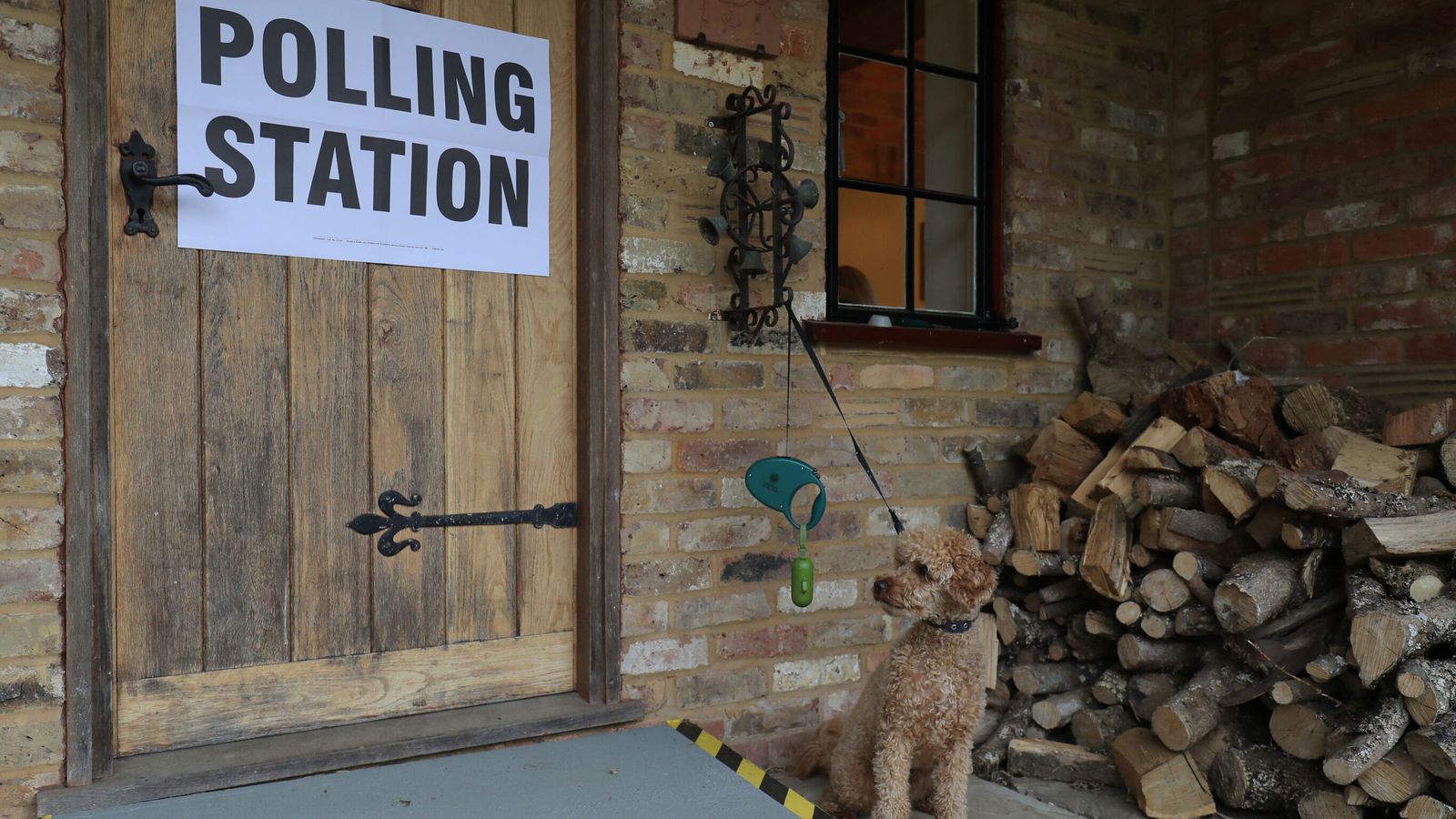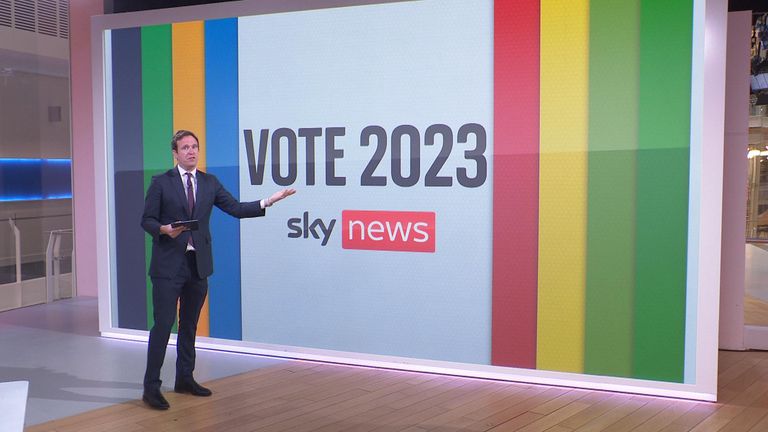Polls have closed in this year’s crunch local elections – with results expected to start rolling in from midnight.
Voters are deciding who runs services in 230 (out of 317) local authorities in England, with around 8,000 councillors’ seats up for grabs.
Mayors are also being chosen in Bedford, Leicester, Mansfield and Middlesbrough in what is the biggest round of local elections since 2019.
It’s also the biggest test of public opinion this side of the next general election, and Labour’s chance to capitalise on national polls suggesting it is on course to form the next government.
Voting opened at 7am and closed at 10pm, giving people a 15-hour window to mark their ballots.
For the first time this year, people were required to take ID with them to be eligible to vote.
The move led to concern over a drop in turn out – but there is confusion over whether the true number of people turned away because they lack ID will be recorded.
As voting got under way, the Electoral Reform Society claimed there have been “countless examples of people being denied their right to vote due to these new laws”, including people being “turned away for not looking enough like their photo”.
However, the Association of Electoral Administrators said that no major problems had been reported, though it would likely not hear about individual voters being turned away.
The elections come against the backdrop of a cost of living crisis and record-high NHS waiting lists, key issues which have dominated campaigning.
Opposition parties have also sought to attack the government’s record on crime and water pollution in a bid to make gains from the Tories.
In an apparent attempt to manage expectations, Prime Minister Rishi Sunak said on Wednesday that the elections will be “tough” for the Conservatives.
But Sir Keir Starmer was also coy about his party’s chances, saying only that he hoped to make “progress”.
The seats were last contested in 2019, when then prime minister Theresa May was weeks away from resigning, with her party losing 1,300 seats.
Click to subscribe to the Sky News Daily wherever you get your podcasts
Labour, led by Jeremy Corbyn at the time, also suffered losses with the Lib Dems, Greens and independents coming off best.
Labour will be looking to win back these areas – and take seats directly from the Tories.
According to Professor Michael Thrasher, Sky News elections analyst, there are 22 Conservative-controlled councils whose fates are on the line due to their small majorities.
A loss of just two seats means Brentwood and Windsor & Maidenhead fall, three seats and North West Leicestershire and South Gloucestershire go the same way, for example.
Here are his benchmarks for what would make a good and bad night:
Conservatives
• Fewer than 300 losses: This would see the party winning council seats back from Independents, with Labour and the Lib Dems not prospering.
• 500 losses: The party could argue “mid-term blues” and will assume Labour could be caught before the general election.
• 750 losses: This would indicate a clear swing to Labour, but still less than opinion polls imply.
• 1,000 losses: A very bad night, with a third of all seats defended by the Conservatives lost.
Labour
• 700 gains: The best local elections for at least a decade. Labour would look on its way to becoming the largest party in Westminster, even if short of a majority.
• 450 gains: These results would be better than in 2022, when local elections took place in Greater London.
• 250 gains: A disappointing result for Labour in the context of recent opinion polls.
• Under 150 gains: A step backwards for Labour.
Liberal Democrats
• 150+ gains: Eating into Conservative territory and could put some marginal constituencies in play at the next election.
• 50-100 gains: Comfortable enough in their own heartlands but only modest further progress.
• Fewer than 50 gains: Fewer than 50 gains: Still struggling to pose a real threat to the Conservatives in the south.
Read More:
Local elections 2023: How to cut through the political spin as the results come in
Red wall set to abandon Conservatives, projection suggests
Conservative Party chairman Greg Hands has said they could lose as many as 1,000 council seats, but many political analysts suspect he was managing expectations.
However, if Labour, riding high in national polling, fails to make decent gains then party leader Sir Keir Starmer would be put under pressure.
The party will need to make gains in traditional Red Wall areas like Darlington and Stoke-on-Trent to prove it is winning back supporters who have turned away from them in recent years.
But a big win would be ending Conservative rule in battleground areas such as Medway and Swindon.
Meanwhile, the Lib Dems have been on a mission to win votes in southern Tory heartlands like Windsor & Maidenhead.
When will the results be announced?
Sixty-two councils expect a result from midnight through to breakfast time.
More than half the 230 councils file their results in mid to late afternoon, while around 30 are expected to declare their results after teatime.
There are no local elections in Scotland or Wales, but voters in Northern Ireland will be able to have their say on 18 May, with 462 seats across 11 local councils up for grabs.
Sky News will be bringing you full coverage both on TV and online.

